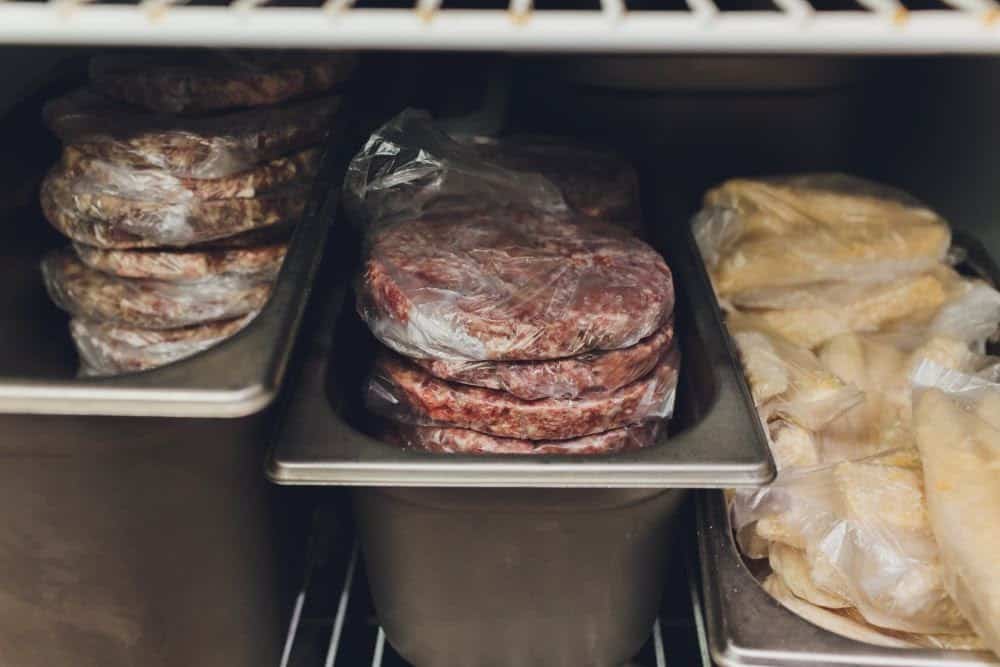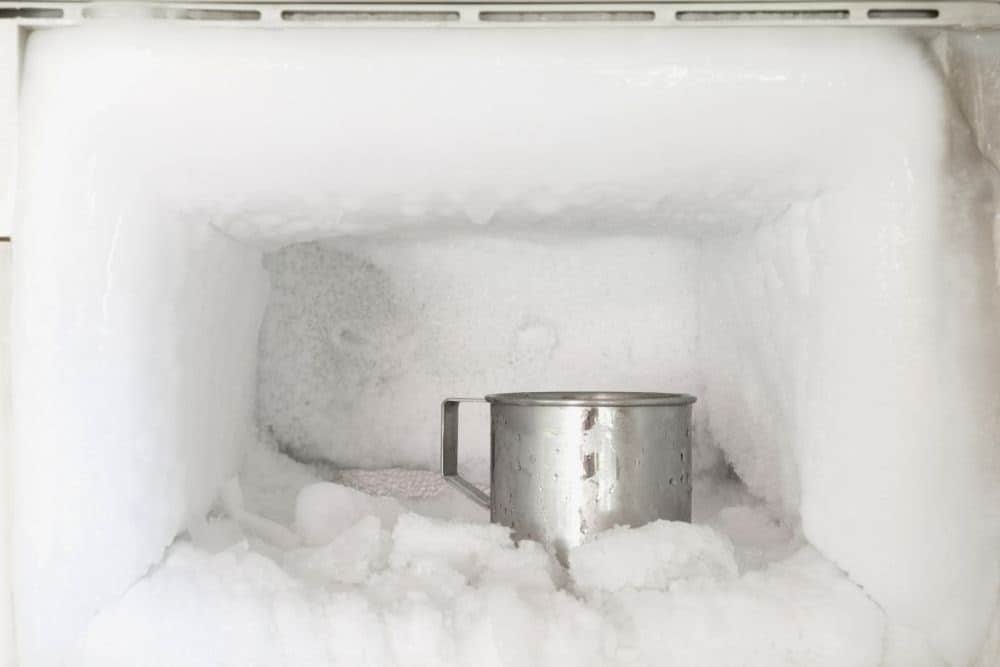Whle we hope you find our in depth guide below useful, we wanted to provide you with some useful official True Freezer resources that you may find helpful.
On their support website you can find repair people near you and look up information specific to your model of True Freezer
A True Freezer is a commercial freezer designed to maintain and preserve the quality of your products. Before diving into issues, it's important to understand the key aspects of your True Freezer's performance.
Ensure your temperature settings are correct. The ideal temperature range for a freezer is between -18°C and -23°C (-0°F and -10°F). Adjusting the thermostat accordingly can help prevent issues in the freezing process.
As with any appliance, True Freezers have various mechanical components that contribute to efficient operation. These components include the compressor, evaporator fan, and condenser coils. Regular maintenance of these parts can prevent problems and help your freezer run at its best.
Your True Freezer's cooling capacity is vital for proper freezing. Overloading your freezer or not allowing proper air circulation may cause it to struggle to maintain the appropriate temperature. Distribute items evenly and avoid blocking vents to ensure optimal cooling capacity.

Elevate your food storage for better airflow!
Understanding these aspects of your True Freezer will help you properly maintain it and keep it running efficiently. Remember, consistent care and regular maintenance are key to getting the most out of your appliance.
If your True Freezer is not freezing, calling a professional service is wise when you cannot fix the issue using simple troubleshooting methods. A pro can diagnose and repair more complex issues, ensuring your freezer works correctly and safely.
When you notice problems with internal components, such as the compressor or its parts, contact a commercial appliance repair professional. They have the expertise to test, replace, and install these parts without causing further damage to your appliance.
Another sign that you need expert help is if the thermostat does not click when changing settings. In this case, a pro can replace it for you, ensuring optimal temperature control in your freezer.
Professional services often provide access to quality replacement parts at lower costs. This can save you money instead of purchasing expensive parts on your own.
Overall, calling a professional when facing issues with your True Freezer ensures that your appliance is fixed quickly and correctly. This will ultimately save you time, money, and potential food spoilage.
As a freezer owner, it's important for you to be aware of common issues you might face. In this section, we will discuss three common freezer problems: excessive frost buildup, temperature fluctuations, and leaking water.
One common issue you might experience is frost buildup. This occurs when cold air enters your freezer and causes excess ice to form. To avoid this, ensure your freezer door is always fully closed and check the door seal for any damage. If needed, replace the damaged seal to keep cold air inside your freezer. It's also a good idea to regularly defrost your freezer to prevent ice buildup if your freezer is manual defrost.

Keep frost at bay by defrosting regularly and sealing that door like a pro.
Another issue your freezer might face is temperature fluctuations. Fluctuating temps can lead to ice crystals forming on food that could lead to freezer burn.
Keep an eye on the temperature settings and use a thermometer to regularly monitor the interior temperature. According to the USDA, to keep your food cold enough, be sure to set your freezer temperatureto 0 degrees Fahrenheit. If you notice any changes, inspect your door seal and keep your freezer away from heat sources like ovens or direct sunlight.
Leaking water is another problem you could face. This can occur when the defrost drain becomes clogged or there's an issue with the water supply line. To identify the source of the leak, check the defrost drain and remove any blockages. If you can't find the issue, consider calling a professional for help.
When your True Freezer is not freezing, you need to identify the root cause. In this section, we'll discuss common issues and how to address them.
Check the thermostat setting on your freezer. Make sure it's at the correct temperature (0 degrees Fahrenheit). You can use an analog thermometer to confirm the accuracy of your temperature dial. If the issue persists, make sure you don’t have a faulty thermostat and consider a professional replacement if necessary.
Dirty or clogged coils can disrupt the cooling process in your freezer. Evaporator and condenser coils are vital components in the cooling process for both a commercial refrigerator and a commercial freezer (as well as your household fridge and freezer).
Your evaporator coil is located within your freezer and is able to transfer the heat within your freezer to the refrigerant which works its way to the condenser coils where the heat is dissipated.
The condenser coil takes all the heat from within the freezer that is captured by the refrigerant and releases it to the outside air. The condenser coil is located on the outside of your unit.
Ensure both the evaporator and condenser coils are free from debris and dust. Clean them regularly to maintain proper airflow and cooling efficiency. If the coils are damaged, you may need to replace them.
The compressor and fans play crucial roles in efficient cooling. If your freezer is not freezing, check if the compressor is working properly. A faulty compressor may require professional repairs or replacement. The evaporator fan circulates cool air inside the freezer. Make sure both fans are functioning, and clean the blades if there is ice buildup on them.
Keep in mind that regular maintenance can help prevent issues with your True Freezer. By addressing these common problems, you can restore your freezer's performance and keep it running in optimal condition.
Your freezer relies on its defrost system to maintain consistent cooling. This section will provide guidance on inspecting key components like the defrost cycle, defrost heater, and defrost timer.
The defrost cycle is vital for your freezer's cooling efficiency. When the cycle works properly, the frost on the evaporator coils melts and flows down the defrost drain. If frost accumulates around the coils, it can cause cooling issues. You should regularly inspect the defrost drain for blockages and remove any debris that could impede the flow of melted frost.
The defrost heater is responsible for melting the frost off the evaporator coils. If the heater fails, your freezer may not cool effectively due to a buildup of frost. Check the heater by unplugging your freezer, locating the heater, and using a multimeter to test its continuity. Replace the heater if it fails the test.
Watch as a defrost heater is removed and replaced.
The defrost timer ensures the freezer operates in cycles, alternating between cooling and defrosting. A faulty timer may cause the freezer to stay in one mode, resulting in poor freezing performance. To test the timer, locate it in your freezer, turn it clockwise to advance the timer, and listen for a click. If the timer doesn't click or advance, replace it with a new one.
Examine the door seals regularly. Wipe them down with a damp cloth and mild soap. This keeps them clean and prevents air leaks that could cause a loss of cooling power.
Ensure your condenser coils stay clean. Dirty or dusty coils can reduce your freezer's efficiency. Use a vacuum with a crevice attachment to clear debris from the coils. You should do this every 3-4 months for optimal performance.
Keep air vents clean and unobstructed. This helps your freezer maintain proper air circulation. Check for any obstructions, and remove potential blockages, such as food debris or containers.
Ensure your freezer has enough ventilation space around it. This allows for heat dissipation, making your freezer work more efficiently. Leave at least 3 inches of space around your freezer for proper ventilation.
When your True Freezer is not freezing, it's essential to examine its electrical components. This section will guide you on how to perform these tests.
A multimeter is a handy tool for checking various electrical components in your freezer. Follow these steps:
If any component fails the continuity test, it should be replaced.
Your freezer's start relay and overload are crucial in the proper functioning of the compressor. Here's how to test these components:
Remember to check your breaker and power connections, particularly after a power outage. A tripped breaker or loose connection could be the reason for your freezer not freezing.
Performing these electrical component checks will help you identify and resolve issues with your True Freezer not freezing. As always, ensure your safety when working with electrical appliances.
It largely depends on the model, size, and load of your True Freezer. Generally, it takes a few hours for your True Freezer to reach its optimal operating temperature. Keep in mind that it's quicker if you're putting in items already chilled as it will help to maintain the temperature more effectively. Some sources suggest that it can take up to 24 hours for a new freezer to entirely freeze fresh items placed inside. Always check the user manual for accurate information regarding your specific model.
To reset your True Refrigerator, first, unplug the unit from the wall socket. Give it a few minutes for the compressor to cool down. This cooling process is crucial to avoid potential damage to the unit. After waiting, plug the unit back into the wall socket.
If your True refrigerator still seems not to work as it should, check for issues such as an open or blown start capacitor, a defective relay, or frost in the suction line. If you're uncertain, don't hesitate to contact a professional technician for proper guidance and assistance.
